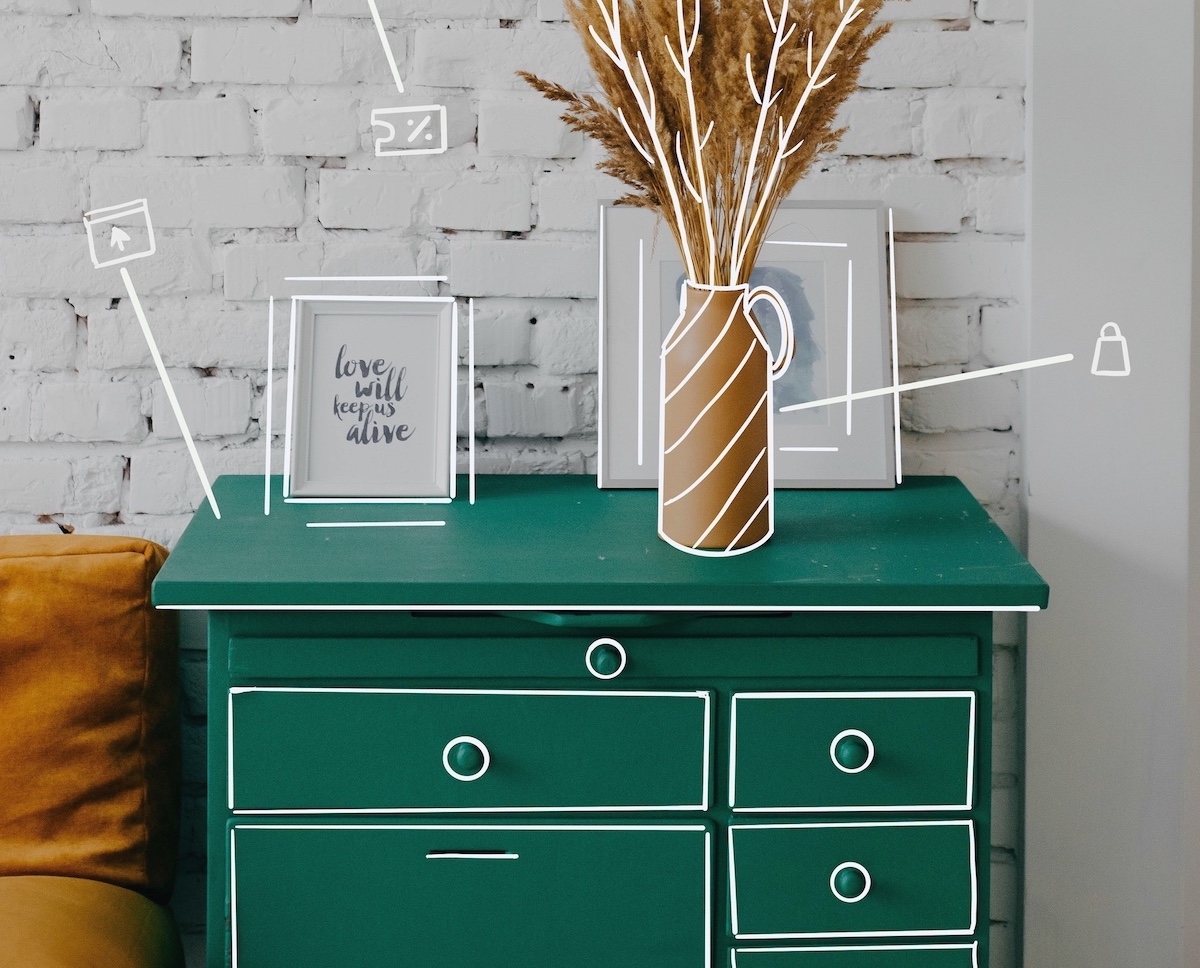
Rethinking Retail: The Home Goods Playbook
Home goods retailers have an enormous opportunity to increase repeat purchase rates by creating an engaging and relevant product discovery experience for shoppers.
To do so, ecommerce marketing teams must develop a deep understanding of the various phases through which customers go on their path to purchase and create individualized experiences accordingly.
To help you achieve this goal, we have a special home goods edition of our Rethinking Retail Playbook, featuring seven simple plays any home goods marketing team can run today.
Play #1: Re-engage Shoppers Based on Seasonality
Getting shoppers to come back time and again is challenging for any retailer, but it’s particularly difficult for those in the home goods space, where many items are big ticket purchases. That said, growing customer loyalty is key to success.
One of the best ways to achieve this goal is to re-engage shoppers throughout the year based on different seasonal needs. For instance, you can send weekly best seller emails or content-driven emails that focus on seasonally relevant products. This might mean promoting outdoor furniture over the summer, while making recommendations around entertaining and decoration needs during the holiday season.
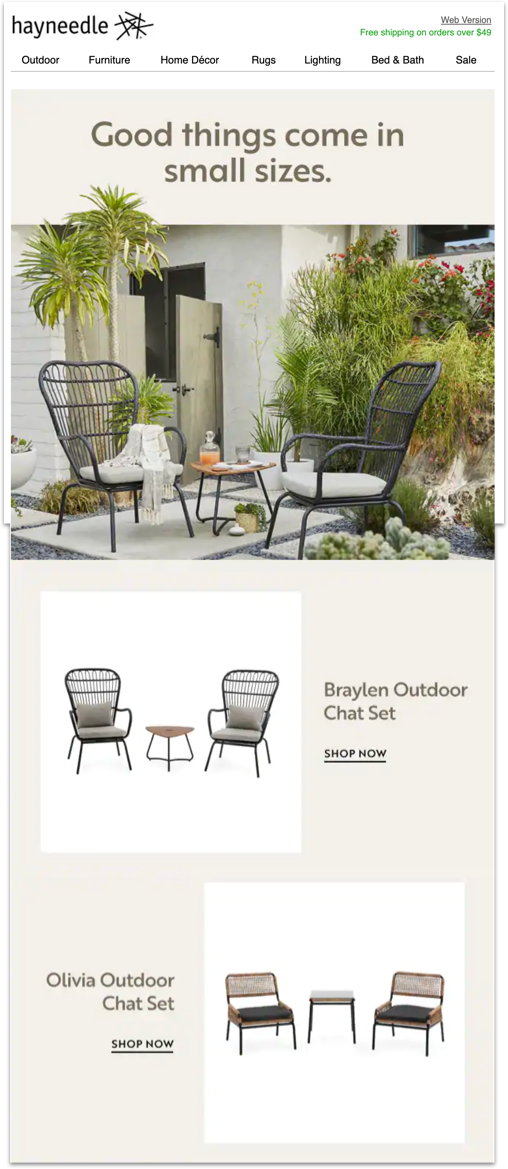
Play #2: Drive Continued Engagement with a Category Nurture
Big ticket items like couches and beds often have a lengthy purchase cycle, with customers doing significant research before actually buying. This level of research creates several opportunities for engagement through a nurture-based, information-driven approach to marketing.
The best play here is to set up category nurtures with multiple touches that feature content about the products and information like design or layout tips. Providing this information regularly to customers who have browsed but not purchased can go a long way toward helping them make a decision and feel comfortable spending on higher value items.
Since these are big ticket items, customers may want to test these products in real-life before buying. Under normal circumstances, this makes it important to share store information in emails so customers can easily identify the best place to test products. In the time of COVID-19, the best approach is to include messaging about when stores will reopen and what your brand plans to do to keep employees and customers safe once they do reopen.
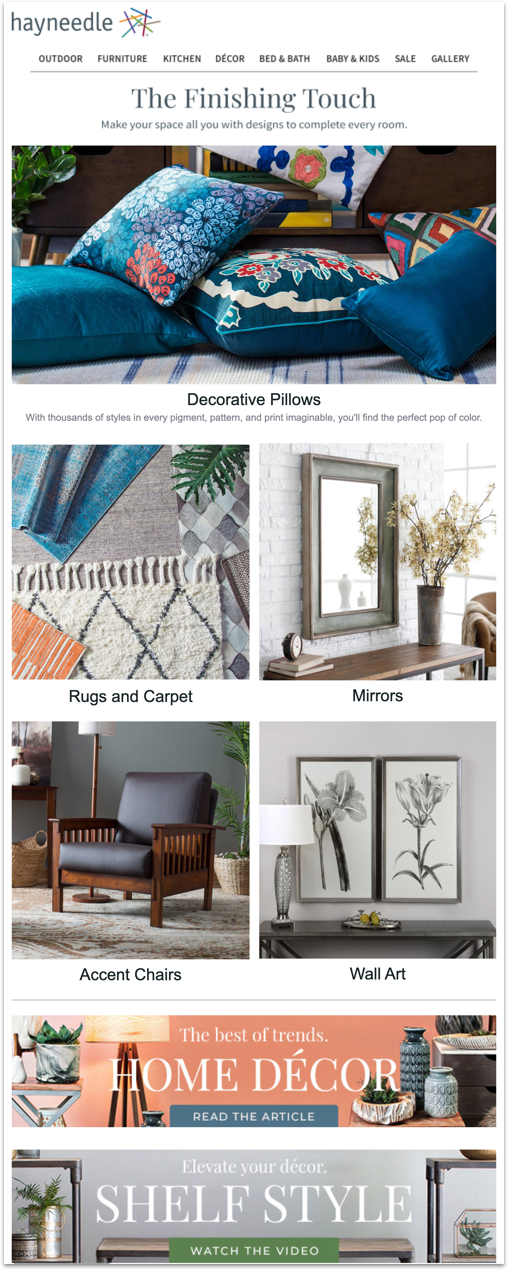
Play #3: Increase Second Purchases (and Beyond) with Targeted Cross-Sell Recommendations
Only about 9% of first-time home goods buyers will make a second purchase within a year. This situation isn’t necessarily surprising given the nature of many home goods purchases. After all, once someone buys a couch, they likely won’t come back for another for quite a while.
However, this challenge is far from insurmountable. The best way to increase second purchase rates (and beyond) is to run targeted cross-sell campaigns. For example, you can introduce a post-purchase triggered email that uses a “next best purchase” predictive model to feature product recommendations tailored to what each individual shopper is most likely to purchase next (based on things like past behavior and predicted affinities). In this case, someone who bought a couch might see predictive recommendations for complementary products, like a coffee table or throw pillows, while someone who bought a bed might see recommendations for comforters or nightstands.
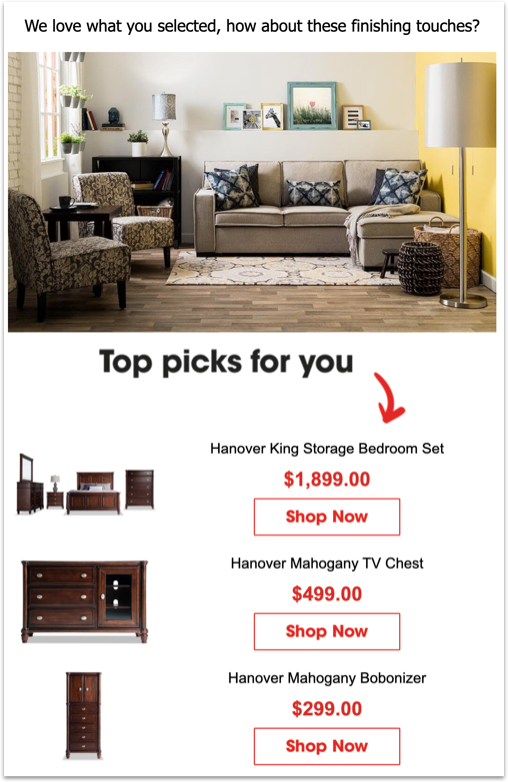
Play #4: Create Long-Term Connections with an Intelligent “Upgrade” Campaign
Big ticket items like a couch or a bed might last a while, but they don’t last forever. At some point, people will need to upgrade. Maybe they’ve worn through the first model or it’s gone out of style. Whatever the reason, your marketing team can get ahead of this behavior with an intelligent upgrade campaign.
To start, you will need to ensure your ESP has a historical purchase file (note that this may require regular ingestions to capture offline purchase data). From there, an AI-based system can evaluate shopping patterns to identify the timeframe during which people tend to upgrade different types of products. Finally, you can use that information to send a triggered email when shoppers are “due” for an upgrade on those items.

Play #5: Drive Repeat Purchases with Targeted Content for Recent Movers
Most of the time, moving is an event that triggers home goods purchases. As a result, “moving season,” which is typically May-September creates enormous opportunities. The most advanced home goods retailers can reap these benefits all year long though.
In addition to running targeted “movers” campaigns from May-September, you can also offer shoppers the option to note their timeframe for making a move and then use this data to send personalized recommendations and offers around that time to help these recent movers furnish their new space.
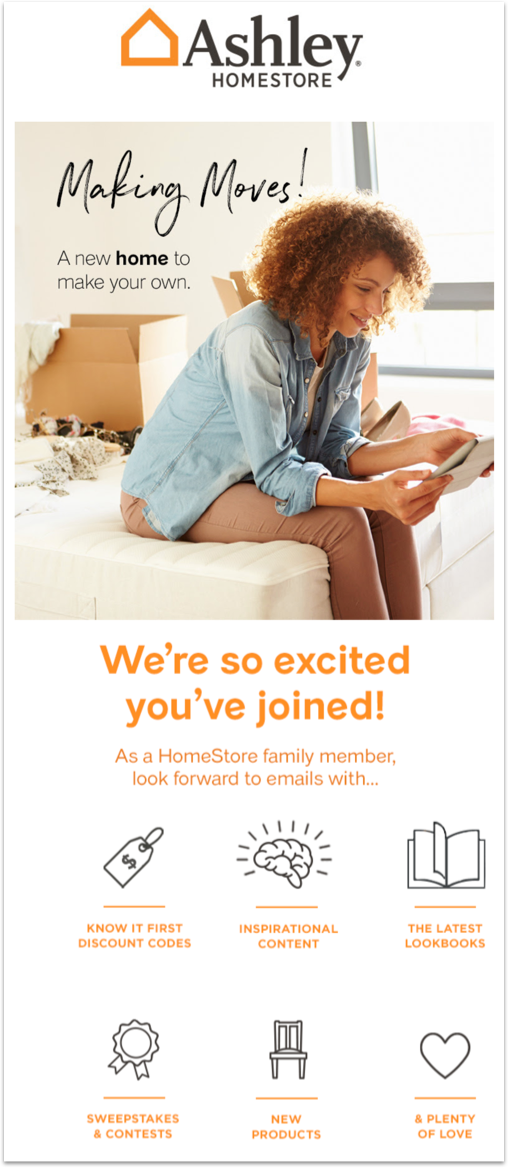
Play #6: Increase Reviews with a Post Purchase Anniversary Campaign
Ratings and reviews are extremely important to shoppers during the online purchase process. This is particularly the case with home goods, where shoppers want to hear from others about things like quality and color that can be hard to grasp when shopping online.
One of the best ways to increase reviews on your site is to run a post purchase anniversary campaign that sends to customers a year or even a few months after they make a purchase and entices them to leave a review. While the email asking for a review can go a long way on its own, you can always include an incentive like an extended warranty or a discount on a co-purchase product to sweeten the deal.
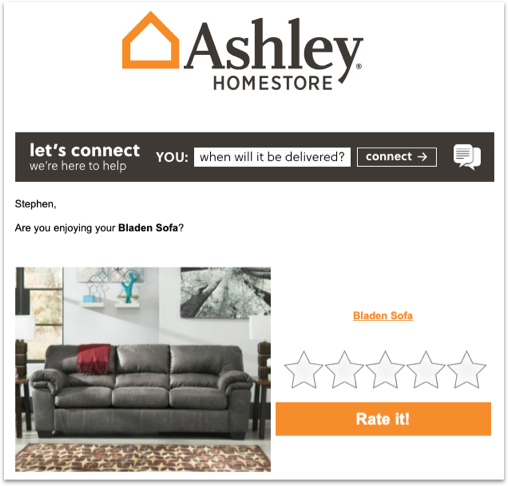
Play #7: Convert Browsers to Buyers with Sale Notifications
Finally, you can give browsers (and abandoners) the final push they need to become buyers by keeping them in the loop on new sales or promotions your brand is running.
To do so, use one-time sends to notify shoppers when sales are about to start and finish and include personalized dynamic product recommendations for items included in the sale based on past behavior and predicted affinities. The inclusion of personalized product recommendations gives shoppers more of a reason to click through the email and pick up their browsing experience where they left off.
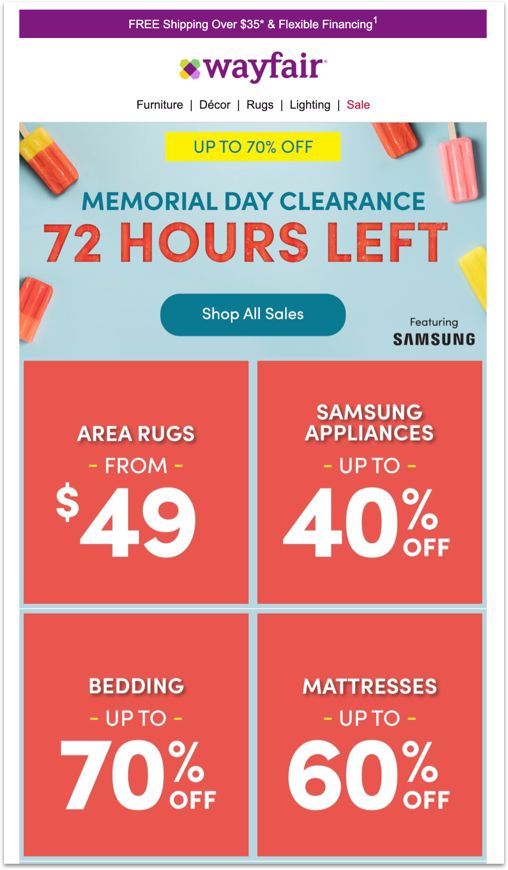
Are You Ready to Rethink Retail?
You’ve read all the plays and put them to work, but are you truly ready to rethink retail for your home goods brand?
Find out everything you need to know in The Retail Reckoning, which explores what makes retail unique, how retail has evolved over the past 20 years and how brands can prepare for success in the next wave of retail.





